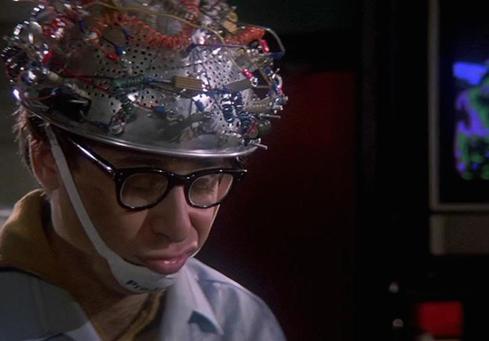Wearable health devices and apps could help fill the gaps in electronic health records, if we can get past the challenges.


Wearable Tech: 5 Healthcare Wins
Wearable Tech: 5 Healthcare Wins (Click image for larger view and slideshow.)
As healthcare costs increase, so does the need to implement clinical analytics further. But collecting data that reflects a person's well-being is a challenge, especially for chronically ill patients.
As of 2009, more than 75% of healthcare costs are linked to chronic conditions, and nearly half of all adults live with at least one chronic illness. Chronic illnesses evolve over time, but until recently, the only way to grasp the bigger picture has been through patient-reported outcomes and bits of data spaced over long periods of time.
When I see my primary care physician, I see her for 20 minutes. In that time, she's attempting to gather data on my cortisol and cholesterol levels, blood pressure, and general lifestyle. That information provides a snapshot of my overall health. Meanwhile, on my wrist, several smart wearables are ticking away, gathering information and ready to process it into a neat little report on my daily heart rate.
[Should physicians be more tech-savvy? Read Doctors Can Go Back To Tech School.]
For many people, especially patients with chronic illness, wearables have the potential to provide a long-term view of a patient's overall health, filling in data gaps to enable evidence-based care. As technology advances and devices gain new capabilities, there is a growing possibility that these devices will be used to track chronic illnesses. By developing and adopting smart wearables that can collect multiple types of meaningful patient data, providers and payers stand to save money by increasing both patient engagement and preventive care.
Medical vs. consumer wearables
The wearable device market is booming. Credit Suisse forecasted that the market would grow from approximately $5 billion in 2013 to $50 billion over the next 3-5 years. As technology has advanced, two classes of wearable devices have emerged: medical devices prescribed by a physician and mainstream devices available for consumer purchase. The first category includes single-point solutions capable of tracking one type of data for a single medical condition. The consumer category includes fitness devices designed to be worn during workouts and smart wearables that are meant to be worn continuously. These devices can usually track multiple types of data: sleep data, steps taken, heart rate, etc.
Several FDA-approved wearable devices are commonly prescribed today, such as insulin monitors and cardiac event monitors. Consumer-oriented FDA-approved smart devices include the BodyMedia Fit system and CamNtech's MotionWatch and PRO-Diary. Also, Quanttus is designing a wearable, now in trials, that can produce clinically sound blood pressure measurements.
Medical wearable devices have the potential to leverage consumer wearable strategies by tracking multiple types of data at once, as opposed to the current one-point solutions. This is valuable because a chronic illness can inform deeper insight with multiple data captures. For example, for patients with cardiac illness, it's important to know not only blood pressure, but also cortisol levels and cholesterol. Though technology needs to advance, the ability to provide a multipoint data tracking solution is unique to wearable technology.
Cutting costs by providing access to data
By providing a more complete picture of patients' health, wearable devices could also help cut healthcare costs as providers utilize preventive measures more effectively. Because both clinicians and patients can notice problems early, patients with chronic illnesses can address concerns before winding up in the emergency room. This is a pivotal step toward offsetting the rapidly rising costs of healthcare.
Wearable devices could also provide holistic health data to patients as well as clinicians. Empowering patients by providing them with access to data that they can understand and affect can increase adherence to other preventive behaviors. This is good for health outcomes in general, and it could be cost-effective in other areas, too. Wearables can enable social motivation and engagement, which can be helpful for chronically ill patients.
Many manufacturers are forgoing the medical market and focusing entirely on designing wearables for consumers. For this reason, medical wearables are still limited in functionality. To tackle chronic illnesses effectively, wearable devices need to track more than just heart rate and calories. Physicians need to measure more complex information, such as glucose, hormone, sodium, and neuron-firing levels. These devices also must be designed in a way that encourages sustained engagement and long-term adoption.
Designing for adoption
Clinical wearables may face some of the same adoption challenges as consumer smart wearables. Smart wearables, meant to be worn consistently, suffer from a surprisingly high abandonment rate: Approximately one-third of fitness-tracker users abandon them after six months. This failure is due in large part to design factors. Consumers stop wearing devices that are too conspicuous or uncomfortable or that need to be removed frequently.
Medical devices generally don't have the same abandonment issues, because they're prescribed to be worn for a period of time, and they typically provide a major benefit for the user. Still, wearable device manufacturers would be wise to learn the lessons of smart wearables.
Are wearables the solution for data collection?
Wearables could help solve a pervasive data collection problem. We will likely see wearable devices coming on to the market that consumers can purchase directly, with no prescription. With advances in sensor and battery technology, these devices could help people manage chronic conditions, much like medical wearables sold today. By developing easy-to-wear devices that leverage successful qualities of consumer wearable devices such as lifestyle compatibility, habit formation, and goal reinforcement, wearable manufacturers can create products that track health metrics throughout the day, ensure patient compliance, and gather valuable data.
Though the technology issues may seem daunting, the related business and policy issues may be even more challenging. Manufacturers will face FDA approval, HIPAA compliance requirements, privacy issues, fragmented provider IT systems, and the need to standardize data and measurement approaches. What do you think will be the biggest obstacle? Let us know in the comments section.
Medical data breaches seem to show up on the 6 o'clock news almost every week. If you think it wouldn't happen to you -- or the financial impact will be minor -- think again. Download the Healthcare Data Breaches Cost More Than You Think report today (free registration required).
About the Author(s)
You May Also Like







